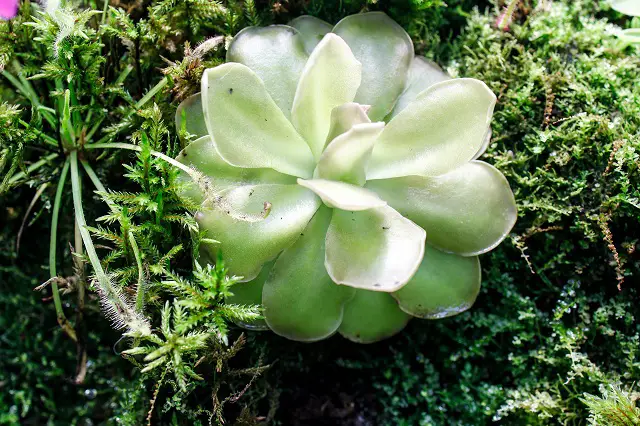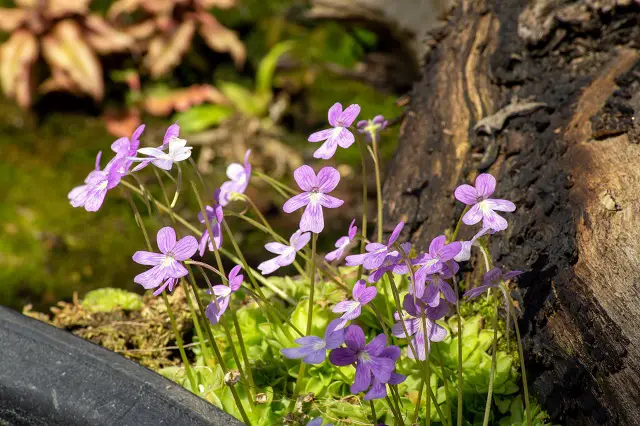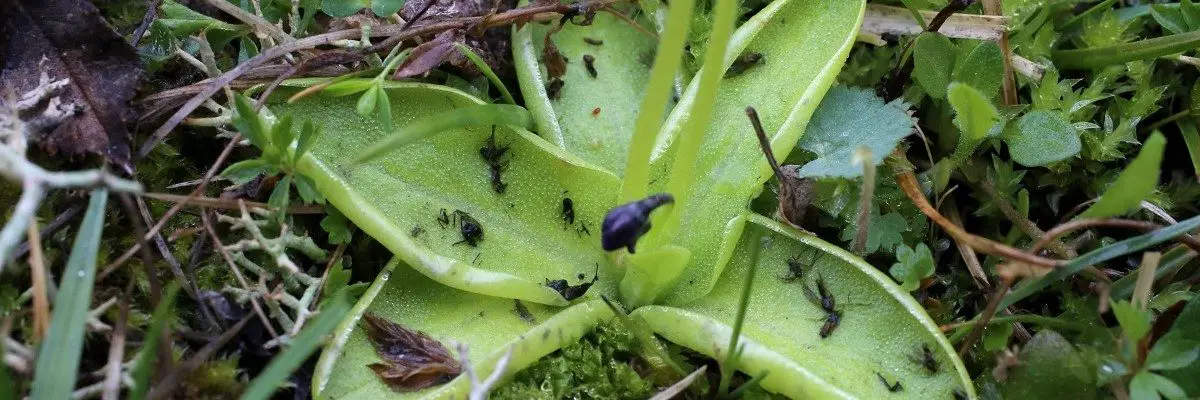How Do Butterworts Catch Prey: To capture and digest their prey, Butterworts (Pinguicula) employ a unique mechanism that resembles sticky fly paper. Its broad, spreading leaves are covered in two types of sticky glands found on the butterworts leaves’ upper surface.
The leaf surface contains two glands that release digestive enzymes when the leaf comes into contact with its prey (most likely insects). The stalked glands secrete a mucous-like substance that causes insects to adhere to them and become stuck. The Sessilee glands secrete a proteolytic enzyme. This enzyme digests the insects so that they may become food for the plant and are better able to absorb nutrients from them.
There are some temperate Pinguicula species that can curl or fold their leaves. The butterwort leaf edge closest to the insect will roll in slowly over a few hours, offering aid in digestion. The butterwort feed off of the nitrogen they get mainly from gnats. These tiny creatures are a valuable source of nitrogen for these plants.
It is also possible for butterworts to consume pollen and other plant parts which have become stuck in their leaves. It is an attractive plant that is easy to grow, they are loved for the brightly colored flowers that range from white to yellow to scarlet red, which makes it a truly unique plant.

What do butterworts catch?
As a consequence of the plant’s ability to retain nutrients, the diet will vary depending on the type of prey and its size. The size limitation of the butterwort is known to be the primary factor influencing the potential prey sources that can be accessed.
There are several species of insects that provide the diet of the butterwort. Most of their prey consists of flying insects with wings that can fly. Since larger insects can easily escape the microscopic glands on butterworts, their diet consists of smaller insects such as springtails, midges, gnats, and aphids.
What to feed butterworts?
It’s pretty amazing how well butterworts are able to catch their food on their own.
Nevertheless, if they seem not to be getting enough food, then every 2-3 weeks, you can sprinkle some fish food on their leaves or maybe even some crushed bloodworms.
To avoid bacterial growth and mold growth, it is best to keep food away from the sensitive crown. During certain seasons of the year, certain Butterwort species enter a state of dormancy.
These plants cease to produce sticky leaves, and the plant size usually decreases. This is a period when Butterwort does not need to be fed.
Do butterworts have active traps?
No, they are classed as semi-active. Butterwort (Pinguicula) and Sundew (Drosera) are a few of the plants included in this group.
Butterwort (Pinguicula) and Sundew (Drosera) are a few of the plants included in this group. As we know, the leaves of these butterworts are covered in sticky, fly paper-like glands, which attract prey with their sticky surface.
Plants like the Butterwort curl their leaves around their meal as soon as it becomes stuck in place and adhered to the surface of the surface. This initiates the digestion process. Due to the sticky surface and the movement of the leaves, they are semi-active.

What does the butterwort plant look like?
They also produce delicate yellow and pink flowers and a few purple and white flowers in the spring, typically between May and July.
In order to make your plant’s flowers more vibrant, you need to give them enough light.
It is important to remember that butterworts go through a period during the winter where they dry out and form rosettes of noncarnivorous leaves that form during the period of dormancy.
The plants usually bloom and put out new leaves as soon as spring arrives. By cutting back the dead foliage during winter, you will help speed up this process.
Don’t be concerned if your butterwort doesn’t flower right away. Sometimes, it may take a year or two for them to grow big enough to produce flowers.


